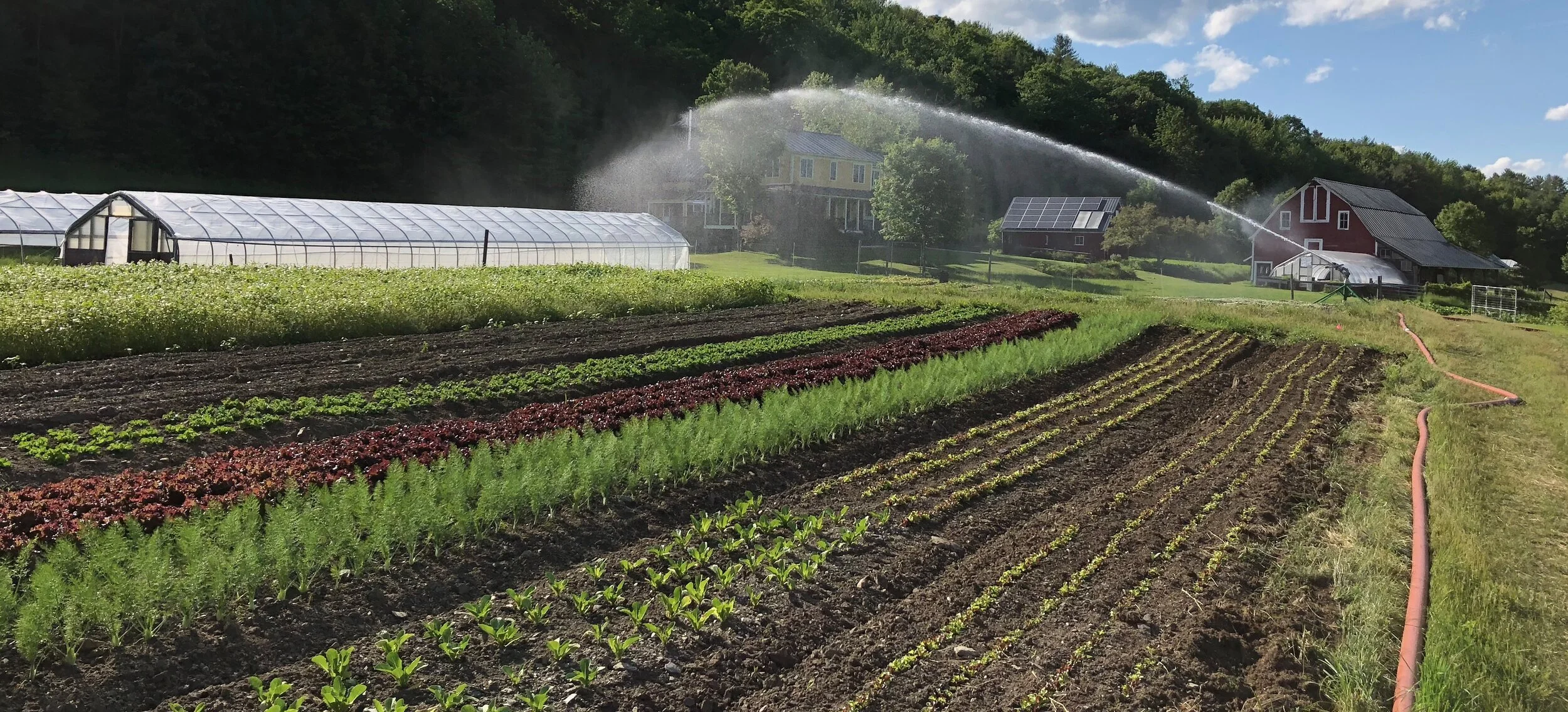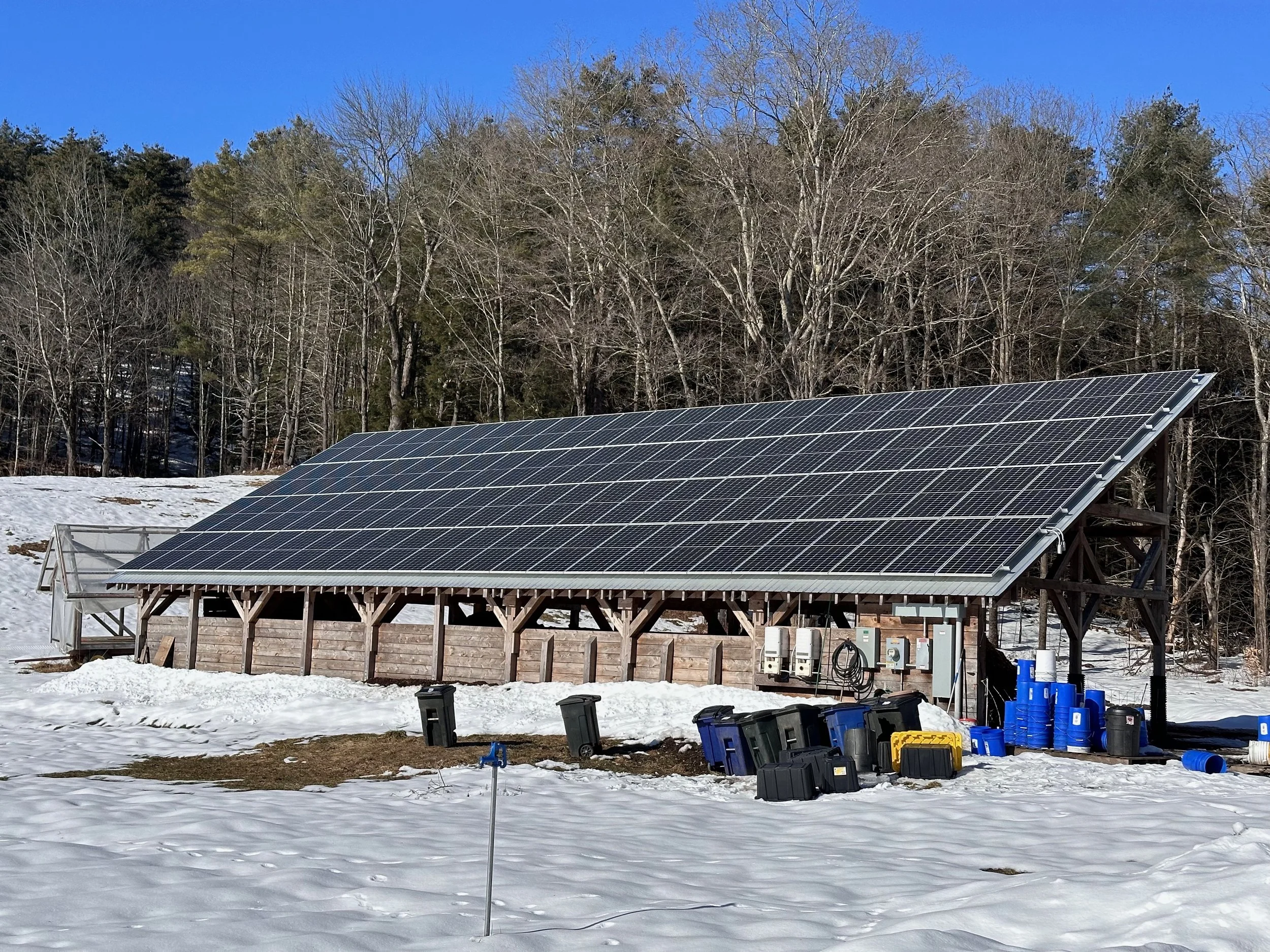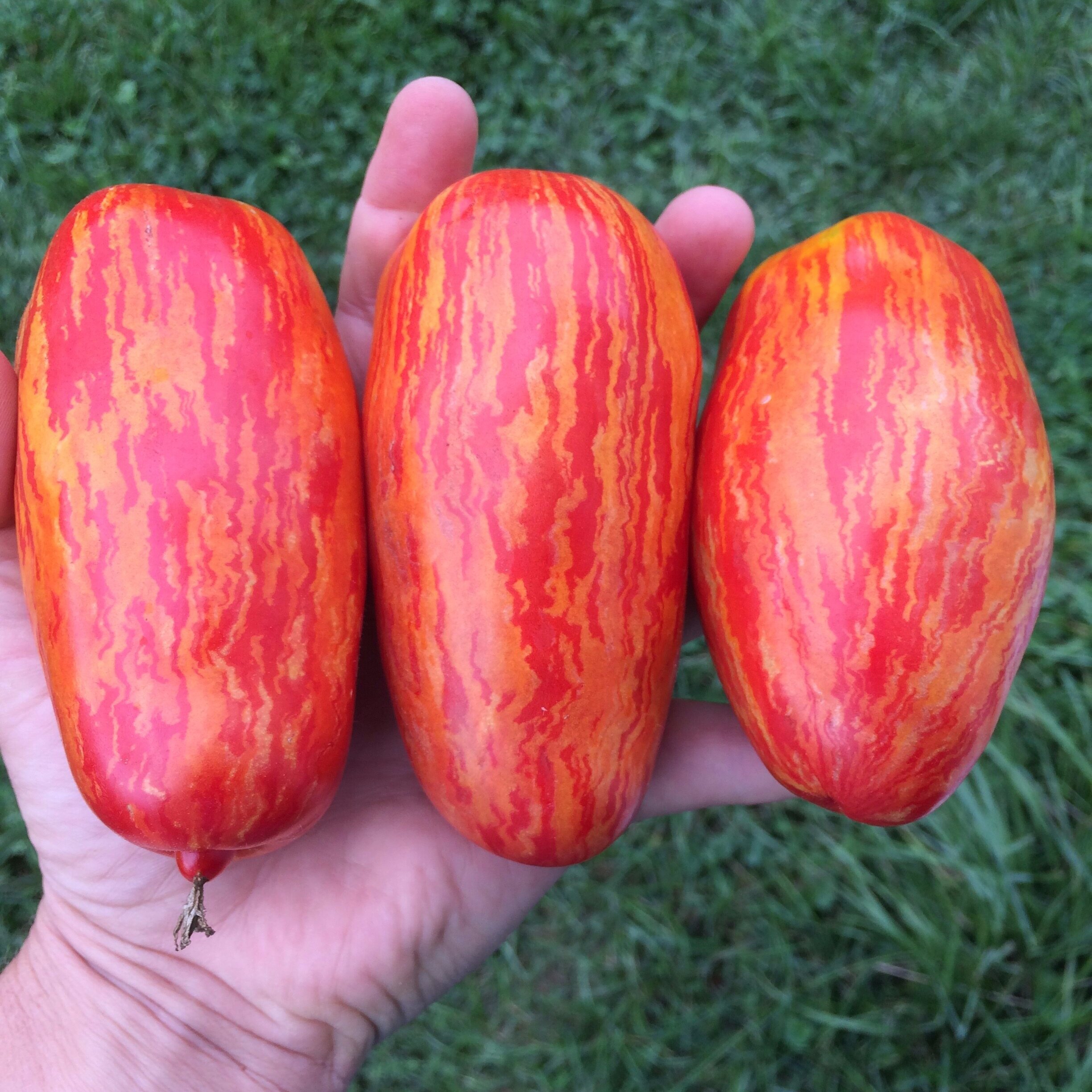New Carbon Management Facilities
Shown upon completion of construction, December 2020
The south-facing roof holds a 30 kW photovoltaic array and the bays underneath are for our actively managed static pile compost system
Farming is, at its core, carbon management. We take sunlight, mix it with carbon (from the air) and water (from the soil), and create food. Might be direct crops like carrots and potatoes, or indirect ones like eggs and lamb, or indirect-indirect ones like honey and venison. Done properly, farming mimics the natural ecosystem around itself and adds carbon to the soil as a result of its activities. Compost, cover crops, rotational grazing, minimal tillage, and thoughtful management of adjacent forests and lands are all tools in the sustainable toolbox.
In 2020, we decided to up our game by building a carbon management facility on the farm. It has two parts: 30 kW of solar power on the roof, providing enough electricity to power 100% of our farm operations; and six bays of actively managed compost space on a concrete slab under the roof. The compost facility allows us to take food scraps from our community and turn them back into food. Pretty straightforward.
A huge thanks go to the nearly 50 people who contributed roughly $5,000 of seed money through our crowdsourcing campaign. And thanks to the many members of the Vermont state government, who saw the wisdom of both requiring Vermonters to do something intelligent with their food waste instead of burying it in landfills and also providing funding for farms through the Working Lands Initiative to build facilities of their own. Vermont contributed $20,000 in grant money through the Working Lands Enterprise Initiative.
Additional thanks to Cat Buxton, of Grow More – Waste Less, who envisioned Sunrise doing its own on-site composting using food scraps returned to the farm by its CSA members. And Jen Murphy, of Willow Tree Community Compost, who was looking for a farm to partner with for her expanding curbside collection business in White River and Wilder. And Nancy LaRowe and Becka Warren, of Vital Communities, who thought that crowdsourcing would be a great way for local farms to increase their capacity. And Sarah Danly at the Vermont Sustainable Jobs Fund, who saw the link between compost and jobs.
On the building side, James McSweeney, of Compost Technical Solutions, who knows the nitty-gritty of turning food waste into food fertilizer. Eric Thorp and E.J. Thorp, who leveled the ground and packed the gravel for the site. Clint Potter, who poured the slab. Nick Zandstra and Carl Demrow of Knock on Wood Sawworks, who built the frame. And Catamount Solar, who installed the solar panels.
Here are a few fun links to recent stories about the compost project, from the Valley News’ Enterprise Magazine and from NBC-TV in Burlington.
The view from the north, showing the compost bays
Steam rising from a pile, even as it’s still being formed. The white PVC pipe, covered with woodchips, is how we blow fresh air through the compost to encourage it to transform faster.
A pair of compost piles. On the left, an older pile in the later stages of curing. on the right, a fresh pile, showing the forced air system in operation. a long-stemmed thermometer is on the wall on the left - tracking pile temperature is the key to a safe, quality end-product that we can use in our certified organic vegetable operation.
2024 Update: the carbon management facility is running at 100% capacity. It’s producing almost all of our fertilizer for the farm these days and 184 MWhr of electricity since coming online in 2020. we were proud to host a regional composting seminar this past august for students from around the northeast.








